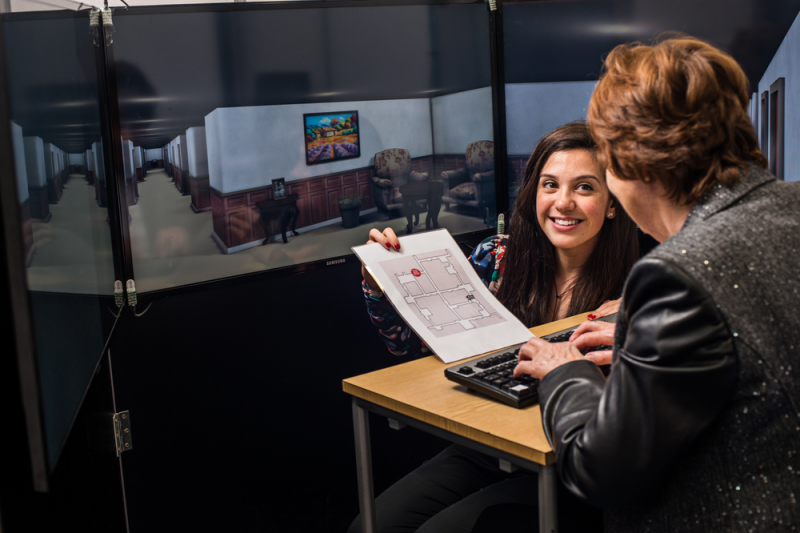There are 850,000 people living with dementia in the UK, with numbers set to rise to over 1 million by 2025. One of the first symptoms of Alzheimer’s Disease is losing your ability to navigate and find your way around new places but 80 percent of people with dementia eventually move from their homes into unfamiliar assisted living or care home environments.

Professor Jan Wiener from the Psychology Department at Bournemouth University has been studying the neuroscience behind navigation for almost 20 years. He is now using his knowledge to produce guidelines to help care home managers design layouts that stop residents from getting lost and disorientated.
“Unfortunately the regions of the brain involved in navigation and spatial learning are some of the earliest affected by Alzheimer’s Disease and ageing,” says Wiener.
“This means that people living with dementia are moving into care homes or sheltered housing at a time in their life when they have real problems learning new environments.”
“In particular your ability to localise yourself with respect to the start place of your travel is one of the first to be affected by Alzheimer’s, and if you can’t rely on this particular navigation mechanism then you need to use environmental cues. This is a problem if all of the corridors look the same.”
As part of a two and a half year ESRC project called ‘Dementia Friendly Architecture’, Wiener has devised a new set of guidelines to be used in care homes, inspired by his neuropsychological research and that of others. Although dementia-friendly guidelines already exist, they often do not address orientation and wayfinding, and those that do are not informed by neuropsychological evidence.
For example, many guidelines recommend placing recognisable objects at decision points along a route, such as at crossroads. However, research by Wiener’s lab suggests that it is more the transitions between places that should be highlighted, as elderly people prefer to use different strategies to remember routes.
“If you learn a route you can use what is known as an associative cues strategy - where you associate a landmark with the direction you are coming in, for example by remembering ‘I turn left at the church and right at the gas station”, says Wiener.
“Alternatively you could use what is known as the beacon strategy, where all you have to remember is that you have to move towards the church when you see it. This requires you to memorise a sequence of landmarks rather than associating each landmark with a particular direction.”
“Our research seems to suggest that that whilst younger people prefer the associative strategy, older participants struggle with this and instead find it much easier to use the second beacon strategy.”
As a result, the guidelines produced by Wiener recommend placing distinctive landmarks within corridors as well as at the ends, in order to make corridors easily distinguishable from one another. His research shows that these landmarks should be bright, distinctive ‘salient’ objects, that only appear once so as not to confuse residents.
“In order for a landmark to be useful for navigation it must stand out,” says Wiener. “Our research has shown that landmark recognition and navigational performance in people with memory problems can be improved by using more vividly coloured, high contrast objects. For example, brightly coloured photographs.”
Other research by the team has shown that people often use verbal codes to memorise landmarks, such as remembering a picture of a flower as ‘the sunflower painting’. This means that paintings in corridors should be easy to describe and not abstract. Care home designers should also avoid placing different pictures of similar objects on the walls - for example, two pictures of sunflowers as both may be remembered verbally as “the sunflower painting”.
The guidelines, which will be officially launched later this year, have already been adopted by several care homes up and down the country. Wiener has also piloted a care home manager training scheme, which he has so far delivered to 40 managers of Dorset care homes to help them implement the guidelines.
He is also working with graphic designers from the Arts University Bournemouth to create designs that can be downloaded and printed by care home staff to make corridors more distinguishable.



